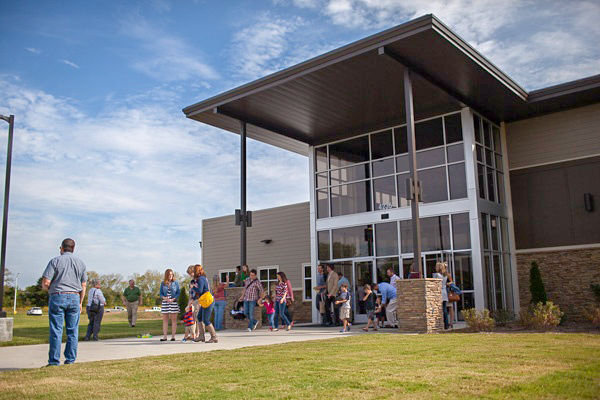On a recent episode of Dow Smith Company’s new podcast From the Ground Up, Dow and Joey sat down with good friend and referral partner John Blankenship.
John has been a commercial real estate broker with The Parks Group for 14 years. He started in the business in 2007, just before the economy began to struggle and later bounce back, so he’s seen highs and lows in the market. Through it all, he’s gained valuable experience, and he shared his insight with us on a variety of topics. “When the pandemic hit, the residential world just kept going and kept exploding but our phones quit ringing,” John says on the podcast. Check it out below.
After about 9 months, things started picking back up. In the past 60-90 days, he has become busy again. Industrial and flex space has done well during the pandemic, but office and retail are just now starting to bounce back.
To Build or To Lease – That Is the Question
As a general rule, John says that if you need less than 7,000 square feet, you’d likely be wise to just lease.
But, if you’re going to build, the building should be about 20 percent of the size of the lot you’re building on. For example, if you’re building 10,000 square feet, you’ll need about 1.25 acres. That will include the parking lot, pavement and building.
John and Joey are currently working on the seventh building in the Seven Oaks Business Park in Smyrna. They’ve purposely made each unit 2,000 square feet because if someone wants that size of a space, it’s really hard to justify building something. It’s much more convenient to just lease. Those spaces can be grouped together if someone needs 4,000, 6,000, 8,000 or even 10,000 square feet. They’re ideal for clients who need offices with some warehouse space or a warehouse with some office space.
“If you have good cash flow but you don’t have a lot saved up, then you’re most likely going to have to be a tenant,” John says. “You’re going to have to rent until you could possibly save up enough for a down payment. In our world, [a down payment] is anywhere from 10 to 20 percent down to purchase the land or the land and the building. But as low as interest rates are right now, if you have the money, I would advise to purchase if you can. But there’s also a good write-off if you’re a tenant. You can write your rent off. That’s profitable for some companies. It just kind of depends which way you want to go.”
Dow agrees with John and adds that clients often like building their own space because they know the mortgage payment will be locked in for long period of time whereas a lease can change over time. Clients can also build with future growth in mind, so when they grow they don’t have to move, but simply expand.
“One of the benefits is that you know what your monthly payment is going to be for a longer period of time,” Dow says. “But it does require a whole lot of an initial investment on the front end and sometimes businesses want to keep that cash in their business because you can sometimes get a higher return of investment on your business margins than you can on real estate. Sometimes you can’t. It just varies from project-to-project.”
What To Look For When Leasing
Location is a big deal for a lot of clients, but oftentimes budget is a more important factor. Price per square foot can help determine which part of town to look in.
Tenants should also give some serious thought to how long they want to be in a building. If they plan on staying for many years, that can sometimes make the owner more willing to negotiate.
“For me as a landlord, the longer, the better. That way I know they’re going to be there for a while,” John says. “I’m more negotiable if they’re going to be there for a while. But I also work with other landlords who don’t want anything over three years. They just won’t sign anything over three. That’s their preference but I don’t understand it. I want somebody for five, seven or ten years if I can get them.”
Once you’ve found a place you love at a lease you can live with, John says it’s important to remember that you’ll have to renegotiate when the lease is up – and you should start that process as early as possible. He advises to start the discussion a year in advance.
“I don’t want to wait until the last minute for them or for us,” John says. “If they decide they are going to leave, I want to have three to six months to make sure I can get that leased up the day they move out.”
Want To Hear What John Thinks About the Future? Listen up!
You can listen to the entire podcast here. From the Ground Up is Dow Smith Company’s podcast, which features people we’re interested in, projects we’re working on and all the nuts and bolts of the design-build business. Episodes are released every other Tuesday on Apple Podcasts and Spotify.






